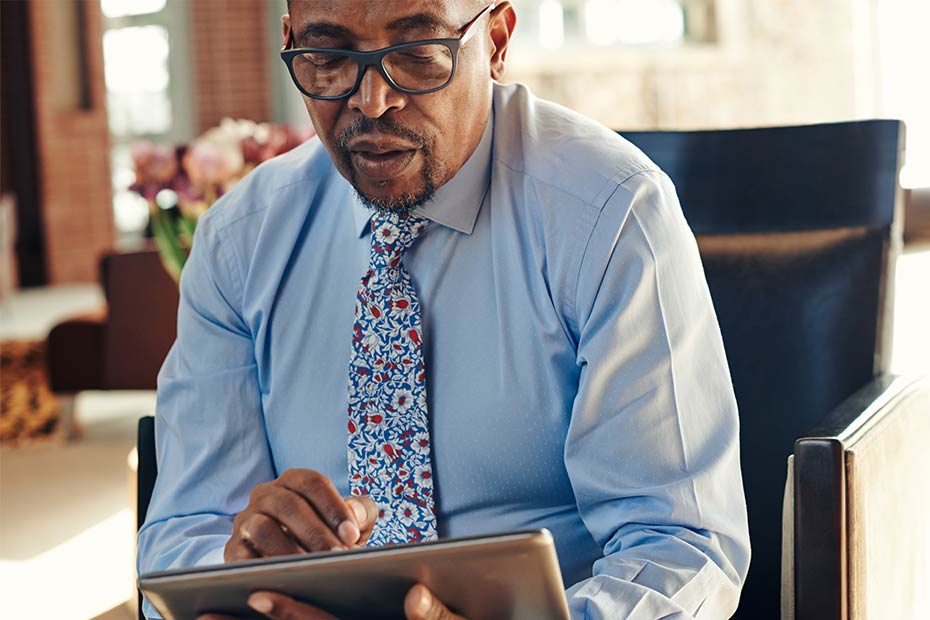Since the start of COVID-19, today’s consumer needs, and even demands experiences that are convenient, contactless, clean and physically distant. In Latin America and the Caribbean, eCommerce sales are expected to grow by 21%. Online purchases for essential goods such as groceries and household supplies have significantly increased during the pandemic. More customers are requiring businesses across all sectors to have an e-commerce component to aid in contactless transactions.
Even when COVID-19 has passed its current pandemic phase, it is likely that there will be long-lasting changes to consumer behaviour as consumers continue to use electronic forms of payments such as internet banking, point of sale (debit/credit card transactions), mobile wallet and payment apps.
We sat down with Deverson Warner, Director Cash Transformation at Caribbean Banking, RBC Financial (Caribbean) Limited to learn more about how businesses can embrace going cashless and reap the benefits of that change for themselves and their consumers.
What are the benefits of going cashless?
Going cashless enables faster, more convenient, and easier reconciliation compared to cash transactions. There is an increase in transparency both in terms of digital tracking and increased accountability.
Consumers and businesses have greater security since there is less handling, storing, and exchanging of bulky physical banknotes. If security is breached, funds are easier to recover whereas with cash, that’s less likely. Businesses can now be open 24/7 while having reduced administration and overhead costs due to transactions being contactless.
How easy is it for businesses to transition into digital-only transactions?
Getting your business online is easy as there are a range of options which you can explore to transition to digital services. You can start by building a website or an app.Then integrate contactless point of sale eCommerce services.This allows customers to easily use their debit/credit cards or do completely wireless payments. In this way, as your business grows, your use of digital platforms will seamlessly follow.
Individuals who do not have ready access to financial institutions pay more for cash services (indirect fees, travel costs), and increase vulnerability for theft and/or robbery due to the high volume of cash in hand.
There is still a heavy reliance on cash, particularly with older members of the population. What would you say to them about the digital transformation?
Access to cash for many communities remains essential.However, the use of cash attracts a cost affecting individuals, especially vulnerable groups.
As a financial sector, we must ensure we are focusing on solutions to meet the needs of clients as they age and invest the time to show them how digital solutions add value. Creating a user-friendly, visual step-by-step process is one way we help ease the transition to digital banking.
How does going cashless help protect against fraud and theft?
Increasing cash-based security concerns such as cheque fraud, cost/loss of returned/dishonoured cheques, and time delays to access funds is helping to hasten the transition to electronic solutions for businesses.
For consumers, going cashless helps increase security in areas such as ATM fraud with security devices like improved card slots to prevent card skimming. A digital payment platform is encrypted, more secure and faster.
For smaller businesses and local entrepreneurs who deal mainly in cash, how easy would it be for them to go cashless?
Local entrepreneurs in the Caribbean can easily access electronic solutions that are affordable and designed with them in mind.
For example, the RBC EZPay 2.0 POS payment device is ideal for the on-the-go entrepreneur, who can use it to conduct safe and secure transactions via chip and pin, and contactless payment. The device accepts both credit and debit cards and most importantly is affordable.
Entrepreneurs can also use social media platforms to accept payment – a service available now through Fygaro in association with RBC.
Lastly, what are some not well-known benefits to going cashless?
Going cashless is better for the environment firstly as mining and transporting coins leads to the emission of carbon dioxide, and secondly as polymer and traditional bank notes release carbon dioxide into the atmosphere which may contribute to global warming.
The move to a cashless society helps businesses conduct transactions in a safer, less risky and more environmentally friendly manner which results in an increase in customer satisfaction and a better overall customer experience.
This article is intended as general information only and is not to be relied upon as constituting legal, financial or other professional advice. A professional advisor should be consulted regarding your specific situation. Information presented is believed to be factual and up-to-date but we do not guarantee its accuracy and it should not be regarded as a complete analysis of the subjects discussed. All expressions of opinion reflect the judgment of the authors as of the date of publication and are subject to change. No endorsement of any third parties or their advice, opinions, information, products or services is expressly given or implied by Royal Bank of Canada or any of its affiliates.



















